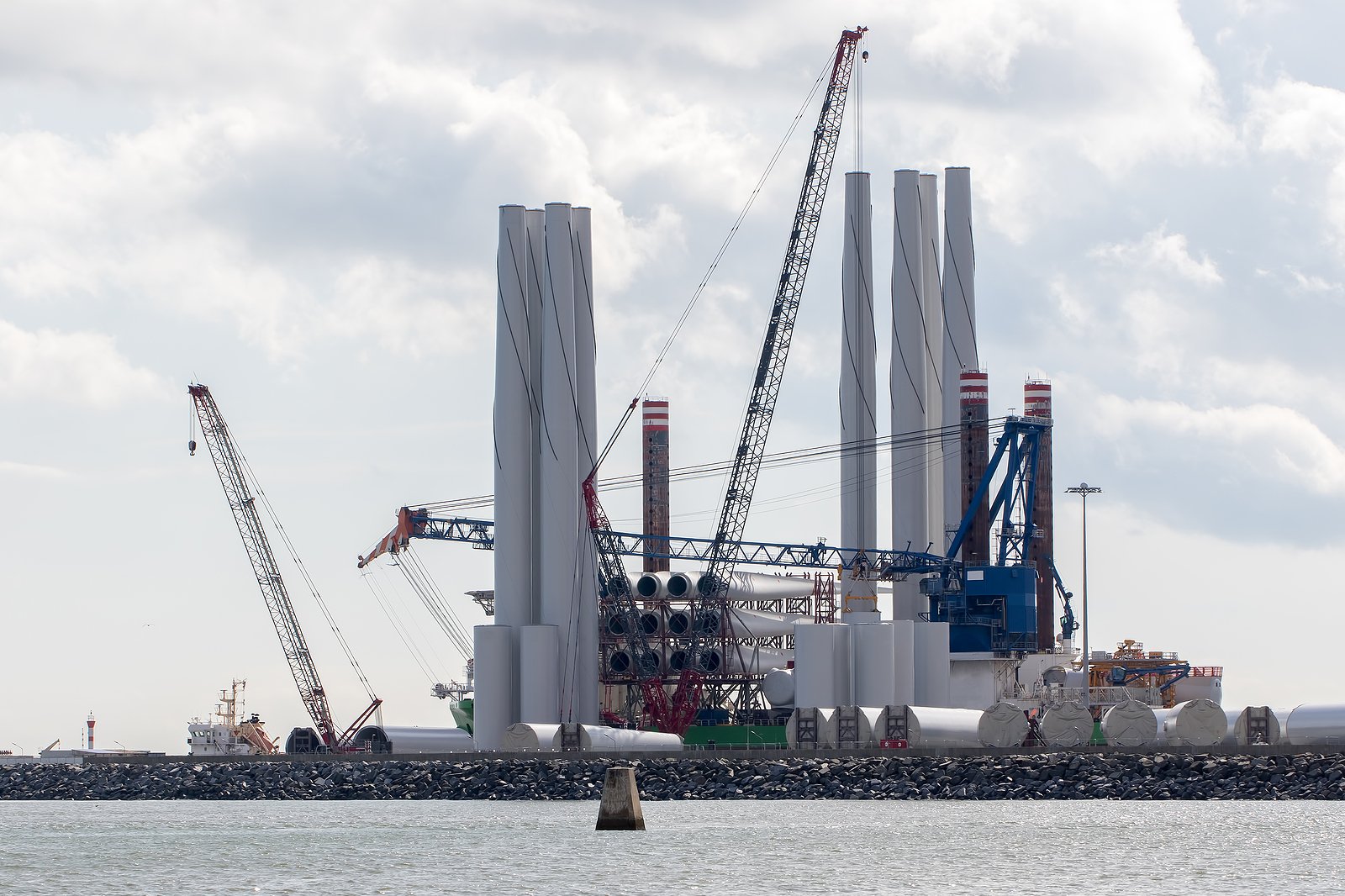Expensive Offshore Wind Farms: A Shift In Industry Favor?

Table of Contents
The Soaring Costs of Offshore Wind Farm Development
Developing offshore wind farms is a capital-intensive undertaking, significantly impacting the overall cost of renewable energy. Several factors contribute to these high costs, making them a major consideration for investors and policymakers alike. The sheer scale and complexity of these projects drive up expenses across the board.
- High Upfront Capital Expenditure: Specialized equipment, including massive wind turbines, specialized vessels for installation and maintenance, and advanced subsea cabling, requires significant upfront investment. These specialized tools are not readily available, leading to high procurement and leasing costs.
- Complex Permitting and Regulatory Processes: Navigating the complex web of permits and regulations, often involving multiple governmental agencies and stakeholders, leads to lengthy delays and increased administrative costs. Environmental impact assessments and consultations with local communities further extend the timeline and add to the expenses.
- Challenges Related to Seabed Conditions and Installation in Deep Waters: The seabed conditions, water depth, and weather patterns significantly impact installation costs. Deep-water installations require more sophisticated technologies and specialized vessels, driving up the overall expenditure. Unforeseen challenges during the installation process also contribute to cost overruns.
- Significant Investment in Grid Infrastructure: Connecting offshore wind farms to the mainland grid requires substantial investment in new transmission lines and substations. This grid connection is crucial for delivering the generated electricity to consumers and often presents considerable infrastructural challenges, resulting in substantial expenses.
- Rising Material Costs and Labor Shortages: The recent surge in material costs, coupled with a shortage of skilled labor in the offshore wind industry, has put further upward pressure on project costs. This makes securing skilled professionals, technicians, and engineers a constant challenge.
According to recent industry reports, the average cost per megawatt of offshore wind capacity is significantly higher than that of onshore wind, often exceeding several million dollars. This disparity highlights the need for cost-effective solutions.
Exploring Cost-Reduction Strategies for Offshore Wind
Despite the current high costs, several strategies can mitigate the expense and make offshore wind a more competitive renewable energy source. Innovation and policy play a key role in driving down the cost of offshore wind energy.
- Technological Advancements: Continuous advancements in turbine design and manufacturing are leading to higher-efficiency turbines that generate more power at a lower cost per unit. Larger turbine sizes and improved blade designs are crucial for increased energy output and efficiency.
- Economies of Scale: Larger projects and standardized components can significantly reduce costs through economies of scale. This approach reduces per-unit costs by streamlining manufacturing and installation processes.
- Improved Project Management and Streamlined Permitting Processes: Efficient project management techniques and streamlined permitting processes can significantly reduce delays and associated costs. Better coordination between stakeholders and the implementation of digital tools can enhance efficiency.
- Governmental Subsidies, Tax Incentives, and Supportive Policies: Government support, including subsidies, tax incentives, and supportive policies, plays a critical role in encouraging investment in offshore wind energy. These measures help offset upfront costs and stimulate market growth.
- Innovation in Floating Offshore Wind Technology: Floating offshore wind technology enables the deployment of wind farms in deeper waters, opening up vast untapped resources. While still relatively expensive, this technology is rapidly developing, leading to cost reductions in the future.
Successful cost-reduction initiatives are already underway. Several European countries have implemented streamlined permitting processes, while companies are investing heavily in research and development to improve turbine efficiency.
The Shifting Landscape: Is the Industry Favoring Other Renewable Sources?
The high costs of offshore wind are undoubtedly sparking a discussion about the competitiveness of other renewable energy sources. Solar and onshore wind, for example, often boast lower upfront costs.
- Offshore Wind vs. Solar/Onshore Wind: While onshore wind and solar have lower upfront costs, their energy output and land requirements differ significantly from offshore wind. Offshore wind offers higher capacity factors and less land use impact.
- Government Policies and Energy Market Dynamics: Government policies and energy market dynamics significantly influence investment decisions. Subsidies and carbon pricing mechanisms can impact the relative competitiveness of different renewable energy sources.
- Future Projections for Renewable Energy Sectors: Future projections indicate continued growth for all renewable energy sectors, but the pace of growth will depend on technological advancements, policy support, and overall market conditions. The relative cost competitiveness will play a significant role in shaping the energy transition.
The levelized cost of energy (LCOE) is a crucial metric in comparing the long-term cost-effectiveness of different technologies. While offshore wind currently has a higher LCOE than onshore wind in some regions, ongoing cost reductions are expected to narrow this gap.
The Role of Government Policy in Shaping Offshore Wind's Future
Government policies and regulations play a pivotal role in influencing the cost and development of offshore wind energy. Effective policies are crucial in balancing the need to support renewable energy deployment with responsible management of taxpayer funds. Stable and long-term policy frameworks are crucial for attracting investments and ensuring long-term viability. The balance lies in creating a supportive environment for technological innovation while ensuring cost-effectiveness.
Conclusion
Expensive offshore wind farms present a significant challenge, but the potential for clean energy generation remains enormous. While the initial investment is substantial, technological advancements, economies of scale, streamlined permitting processes, and supportive government policies can pave the way for more affordable and widely accessible offshore wind energy. The competitiveness of offshore wind is evolving, and continued investment in research, development, and supportive policies is crucial to unlocking the true potential of offshore wind and securing a sustainable energy future. Further exploration of cost-effective solutions for expensive offshore wind farms is vital for the success of the global energy transition.

Featured Posts
-
 Grand Theft Auto Vi Detailed Look At The Official Trailer
May 04, 2025
Grand Theft Auto Vi Detailed Look At The Official Trailer
May 04, 2025 -
 Logan County Jail Report Finding Information On Inmates
May 04, 2025
Logan County Jail Report Finding Information On Inmates
May 04, 2025 -
 Emmy Nomination Greg Olsen Edges Out Tom Brady For Top Honors
May 04, 2025
Emmy Nomination Greg Olsen Edges Out Tom Brady For Top Honors
May 04, 2025 -
 El Ciclista Suizo Fabio Christen Gana La Vuelta A La Region De Murcia
May 04, 2025
El Ciclista Suizo Fabio Christen Gana La Vuelta A La Region De Murcia
May 04, 2025 -
 Corinthians Vs Palmeiras Transmissao Ao Vivo Horario E Escalacoes
May 04, 2025
Corinthians Vs Palmeiras Transmissao Ao Vivo Horario E Escalacoes
May 04, 2025
